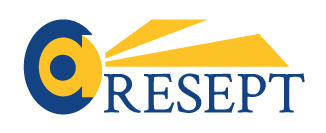Legal documentation relating to fire management
Content of the Fire Prevention file - Codex Art III.3-24
Principle of risk analysis - Codex Art III.3-3
- Probability of simultaneous presence of the sides of the fire triangle
- Equipment, substances, processes and their interactions
- Nature of the activities
- Size of the enterprise or establishment
- Maximum number of persons exposed .
- Specific risks to certain groups of persons
- Location and purpose of the premises
- Presence of several companies in the same working environment
- Work carried out by third parties
- Evacuation principles (see Art III.3-10 and RGPT Art 52.5.2 to 52.5.8, 52.5.10 & 52.5.18)
- PIU: Definition of likely scenarios and assesses the extent of the consequences .
- SDGR & exercise (Art III.3-6), CPPT opinion (Art III.3-5)
It goes without saying that these analyses must be kept up to date and lead to preventive measures.
Fire prevention measures - Codex Art III.3-9
- Principles of primary, secondary and tertiary prevention
- Use, storage of flammable liquids (See RGPT Art 52)
- Triggering of explosions (See ATEX)
- Storage of combustible gases (see ATEX)
- Use of heating and air-conditioning appliances or installations (See RGPT Art 52)
- Use of equipment likely to cause a fire
- Limitation of flammable or combustible substances (See RGPT Art 52)
- Correct storage of flammable or combustible materials (See RGPT Art 52)
- Respect the conditions of distance (see RGPT Art 52)
- Control the "Self-ignition" circumstance .
- Take into account the specificities and evacuation of certain waste (auto-ignition)
- See also RGPT 52.6 and 52.8
These prevention measures are submitted to the employer via the prevention committee and are integrated into the safety culture.
The tasks and organisation of SLCIs are prescribed by law. As a reminder, here is some important information.
- Codex Art III.3-23
- Implementation of ICLS tasks
- Evacuation of people
- Evacuation drills
- Use of fire protection equipment
- Information and training of workers
- Advisory opinion of the Prevention Safety Advisor and the CPPT
- Visa of the CP in charge of the management of the SIPP
Depending on the risk analysis, the employer must ensure that sufficient staff and equipment are available.
The employer will seek the advice of the prevention services, the Committee and, where appropriate, the public emergency services.
This section contains all the procedures and safety instructions.
Content of the information given to all workers - Codex Art III.3-25
- Fire risk
- Prevention measures - implementation and tasks .
- Warning and alarm signals
- Measures to be taken in the event of a fire
- Evacuation
- Information is given to each worker no later than the day of entry into service
- Information is updated
The documents to be sent to all employees can be found in this section.
In many situations, and particularly in the event of fire, staff need to be able to evacuate to a safe place. The number of emergency exits and their size are specific aspects to be taken into account.
These means of evacuation must be included in the evacuation plans and displayed on the floors.
Employers generally follow the requirements of ISO standard 23601 - Safety identification - Evacuation and emergency plans - and can choose between ISO standard 7010 and the pictograms listed in the Welfare Code.
Every year, the company or organisation must carry out evacuation drills. It is desirable for the scenarios to evolve from simple recognition of evacuation routes by staff to more elaborate scenarios.
Of course, learning is the target. It is therefore advisable to document the precise purpose of the exercises, and to note the areas for improvement, or even to adapt the ERPs and/or the safety culture (SDGR).
Reports on these exercises will be compiled in this section.
The emergency services will need to obtain a great deal of information from the person in charge of the building in order to intervene effectively and, above all, safely.
Plans, instructions for use and the necessary contacts must also be made available.
This information can of course be compiled in this section, but it is wise to make "paper" versions available to the emergency services.
We are talking, for example, about the following facilities:
- Electrical installations
- Gas installations
- Heating installations
- Energy shut-off systems
- Ventilation systems
- Fire detection systems
- Automatic extinguishing systems
- ...
In the context of fire safety and installations, checks can be carried out at various levels.
Controls can come from :
- external technical inspection services (pressurised installations, gas, electricity, steam, etc.)
- competent personnel (fire extinguishers and fire-fighting equipment, work equipment, protective equipment, etc.)
- designated persons (e.g. SLCI, which checks the general condition of extinguishing equipment).
- ...
The results of these checks can be found in this section of the dossier.
Legislation is of course binding. When it comes to safety, we have different levels and different authorities responsible. These can be :
- FPS Employment (Law of 4 August, Code, RGPT, standards)
- the FPS for Economic Affairs (RGIE)
- FPS Interior (Basic standards)
- Regions and/or Communities (e.g. nursing homes)
- Communes (decisions by the Burgomaster)
- not to mention the requirements imposed by insurance companies
Respecting everything to the letter therefore becomes very complicated, and can hinder the objective of the organisation or company. In such cases, the person in charge can ask the competent authority for derogations. These derogations will find their place in this part of the dossier.
You are no doubt familiar with the procedure for validating all this work. Every aspect has to go through the advice of the Prevention Services and the Prevention Committee.
In many situations, the advice of the public emergency services is also required.
Information sent to Public Services
Fire brigade pre-visits can be used for complex buildings or sectors of activity. These visits usually provide valuable information to the emergency services.
- access for their emergency vehicles
- additional equipment to be taken in the event of an intervention
- water resources
- hot spots (boiler rooms, storage facilities, kitchens, etc.)
- reception areas
- locations of valves and main circuit breakers
- ...
Once transmitted, this information must be kept up to date.
This site shows each scenario and the planned response to them.
The procedures are explained in this part of the dossier, and the completed document templates are included here.
Advertisers

CRESEPT
The CRESEPT has specialised since 1976 in the organisation of training courses, which are aimed at those wishing to invest in the function of prevention advisor, of course, but also at all those who are sensitive to the issue of workers' well-being.
Coformex
Niv 1 prevention consultant for nearly 20 years, serving safety and well-being at work, Coformex offers you coaching for emergency planning. Coformex also carries out evacuation plans or fire intervention plans.
![]()



VIDYAS
A-FIRST

